-
 Bitcoin
Bitcoin $107,352.1067
0.28% -
 Ethereum
Ethereum $2,429.3531
-0.90% -
 Tether USDt
Tether USDt $1.0001
-0.02% -
 XRP
XRP $2.1894
4.62% -
 BNB
BNB $646.7968
0.36% -
 Solana
Solana $147.4290
4.03% -
 USDC
USDC $0.9998
-0.02% -
 TRON
TRON $0.2756
1.52% -
 Dogecoin
Dogecoin $0.1630
1.14% -
 Cardano
Cardano $0.5612
1.18% -
 Hyperliquid
Hyperliquid $37.0580
-0.05% -
 Bitcoin Cash
Bitcoin Cash $496.9410
-0.09% -
 Sui
Sui $2.7318
3.19% -
 Chainlink
Chainlink $13.1503
0.58% -
 UNUS SED LEO
UNUS SED LEO $9.0766
0.55% -
 Avalanche
Avalanche $17.7220
1.46% -
 Stellar
Stellar $0.2380
1.52% -
 Toncoin
Toncoin $2.8439
0.38% -
 Shiba Inu
Shiba Inu $0.0...01143
1.84% -
 Litecoin
Litecoin $85.8053
1.47% -
 Hedera
Hedera $0.1483
2.70% -
 Monero
Monero $314.3240
2.12% -
 Bitget Token
Bitget Token $4.6725
0.77% -
 Dai
Dai $1.0000
0.00% -
 Polkadot
Polkadot $3.3555
1.28% -
 Ethena USDe
Ethena USDe $1.0001
0.02% -
 Uniswap
Uniswap $7.0890
2.64% -
 Pi
Pi $0.5355
-3.40% -
 Pepe
Pepe $0.0...09393
1.06% -
 Aave
Aave $256.8136
-1.90%
Should I go if the average price line of the time-sharing chart suppresses the rebound?
When the price repeatedly fails to close above the average line on a time-sharing chart, it signals strong resistance and potential bearish momentum in crypto trading.
Jun 28, 2025 at 05:14 pm
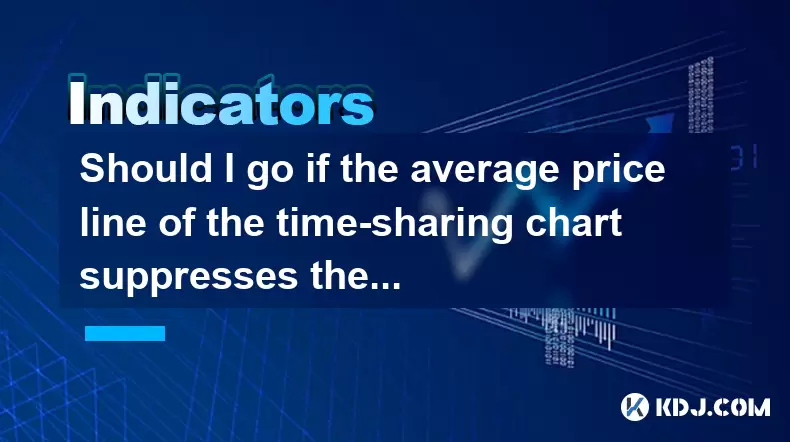
Understanding the Time-Sharing Chart and Average Price Line
The time-sharing chart is a real-time chart used in cryptocurrency trading to visualize price movements over short intervals, typically within a single trading day. It provides traders with insights into intraday volatility and momentum. The average price line, often calculated as a moving average (such as the 20-period or 50-period simple moving average), acts as a dynamic support or resistance level during trading sessions.
In many cases, when the price attempts to rebound above the average price line but fails, it indicates strong selling pressure or lack of buying interest. This phenomenon can be critical for short-term traders who rely on quick reversals for profit.
Important: The average price line suppression does not always signal a bearish trend, but it suggests caution when entering long positions without confirmation.
What Does Suppression Mean in Trading Context?
Suppression occurs when the price repeatedly touches or approaches the average price line but cannot close above it. In technical terms, this behavior reflects that sellers are actively stepping in at those levels, preventing the market from gaining upward momentum.
This situation is particularly relevant in crypto markets, where volatility is high and trends can reverse quickly. When the average price line suppresses the rebound, it may indicate that the bulls are losing control to the bears.
- Observing candlestick patterns near the average line can help identify potential reversal signals or continuation patterns.
- Volume analysis becomes crucial—low volume during a rebound attempt suggests weak conviction among buyers.
- Order book depth can show hidden selling pressure even before the price reaches the average line.
How to Identify Suppression on the Time-Sharing Chart
To determine whether the average price line is suppressing the rebound, traders should focus on the following elements:
- Price rejection near the average line: Look for candles that touch or cross the average line but close below it.
- Consistent failure to hold above the line: Multiple failed attempts to break through suggest strong resistance.
- Divergence between price and indicators: Tools like RSI or MACD may show weakening momentum despite minor price increases.
It’s also essential to compare the current price action with historical behavior around the same average line. If similar rejections have occurred frequently, it reinforces the significance of the suppression pattern.
Decision-Making: Should You Go Long or Exit?
When the price rebounds but fails to sustain above the average line, the decision to enter or exit a trade depends on several factors:
- Risk tolerance: Aggressive traders might try to fade the move, while conservative traders may wait for confirmation before taking any action.
- Position size: If already holding a position, evaluate whether the risk-reward ratio still favors staying in the trade.
- Market context: Is the broader trend bullish or bearish? A suppressed rebound in a downtrend carries more weight than one in a sideways market.
Traders should also consider using stop-loss orders to protect against sudden breakdowns. Placing stops just below the recent swing low can provide a balance between protection and flexibility.
Alternative Strategies During Suppression Phases
If the average price line consistently suppresses rebounds, traders can explore alternative strategies instead of fighting the trend:
- Short-selling opportunities: Entering short positions on failed breakouts can be profitable if momentum continues downward.
- Range trading: If the price oscillates between clear support and resistance levels, range-bound strategies can be effective.
- Wait-and-see approach: Avoid entering until a clear breakout or breakdown confirms a new direction.
Each strategy requires careful monitoring of volume, order flow, and key psychological levels in the market.
Frequently Asked Questions
Q1: What time frame is best for analyzing the average price line on a time-sharing chart?
A: Shorter time frames like 1-minute or 5-minute charts are commonly used for intraday trading. However, combining them with higher time frames (e.g., 15-minute or 30-minute) can improve accuracy.
Q2: Can the average price line act as both support and resistance?
A: Yes, depending on the price action. When the price is above the line, it can serve as support. When below, it often acts as resistance.
Q3: How do I know if a rebound has been genuinely suppressed?
A: Look for multiple failed attempts to close above the line, accompanied by decreasing volume and bearish candlestick formations.
Q4: Are there specific cryptocurrencies where suppression patterns are more reliable?
A: Suppression patterns are common across all crypto assets but tend to be more consistent in highly liquid pairs like BTC/USDT or ETH/USDT due to stronger participation and clearer order flow.
Disclaimer:info@kdj.com
The information provided is not trading advice. kdj.com does not assume any responsibility for any investments made based on the information provided in this article. Cryptocurrencies are highly volatile and it is highly recommended that you invest with caution after thorough research!
If you believe that the content used on this website infringes your copyright, please contact us immediately (info@kdj.com) and we will delete it promptly.
- Pi2Day Disappointment: Why the Pi Network Community Is Losing Faith
- 2025-06-28 18:30:12
- Silver Lining: Robert Kiyosaki's July 2025 Silver Prediction
- 2025-06-28 18:30:12
- Gotta Go Fast! Sonic Speeds into Magic: The Gathering Secret Lair
- 2025-06-28 18:50:12
- Bitcoin Price Swings: Navigating Volatility and Predicting the Future
- 2025-06-28 19:10:14
- Meme Coins in 2025: Will Shiba Inu Make a Comeback?
- 2025-06-28 19:30:12
- Pi Network's AI App Studio and Staking Utility: Revolution or Red Herring?
- 2025-06-28 19:30:12
Related knowledge

Should I go if the average price line of the time-sharing chart suppresses the rebound?
Jun 28,2025 at 05:14pm
Understanding the Time-Sharing Chart and Average Price LineThe time-sharing chart is a real-time chart used in cryptocurrency trading to visualize price movements over short intervals, typically within a single trading day. It provides traders with insights into intraday volatility and momentum. The average price line, often calculated as a moving avera...
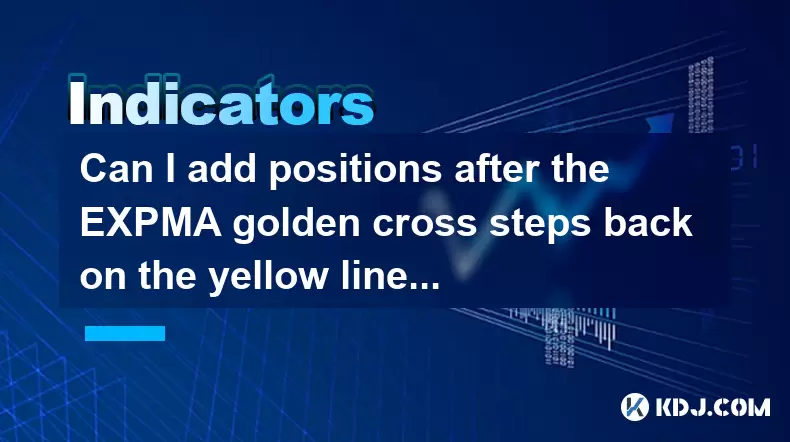
Can I add positions after the EXPMA golden cross steps back on the yellow line?
Jun 28,2025 at 11:57am
Understanding the EXPMA Indicator and Its RelevanceThe EXPMA (Exponential Moving Average) is a technical analysis tool used by traders to identify trends and potential entry or exit points in financial markets, including cryptocurrency trading. Unlike simple moving averages, EXPMA gives more weight to recent price data, making it more responsive to new ...

How to operate the next day after the daily limit is released with huge volume?
Jun 28,2025 at 12:35pm
Understanding the Daily Limit and Its ReleaseIn cryptocurrency trading, daily limits are often set by exchanges to manage volatility or during periods of high market activity. These limits can restrict how much an asset's price can fluctuate within a 24-hour period. When the daily limit is released, it typically means that the price cap has been lifted,...
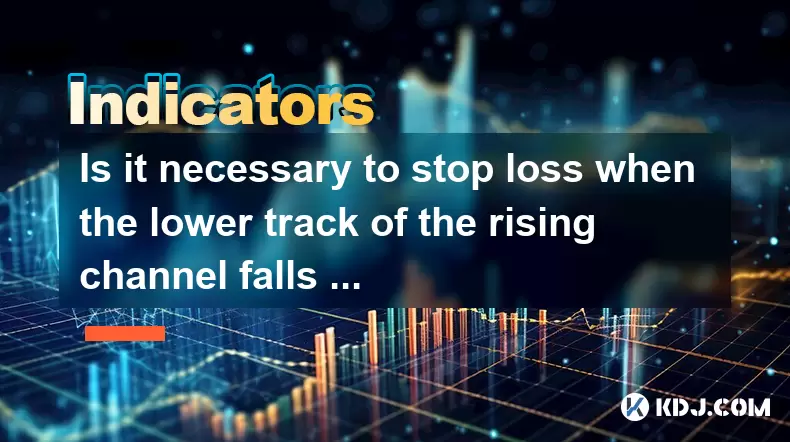
Is it necessary to stop loss when the lower track of the rising channel falls below?
Jun 28,2025 at 05:29pm
Understanding the Rising Channel PatternThe rising channel pattern is a popular technical analysis tool used by traders to identify potential upward trends in asset prices. It consists of two parallel lines: an upper resistance line and a lower support line, both sloping upwards. The price action typically oscillates between these boundaries, offering o...
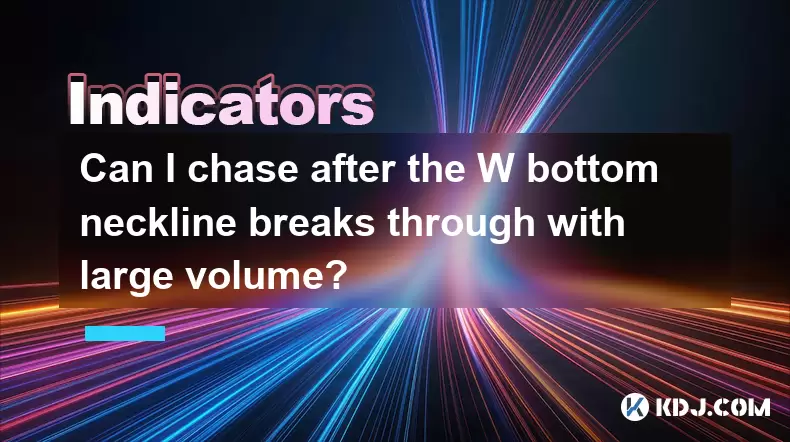
Can I chase after the W bottom neckline breaks through with large volume?
Jun 28,2025 at 07:28am
Understanding the W Bottom Pattern in Cryptocurrency TradingThe W bottom pattern is a common technical analysis formation used by traders to identify potential bullish reversals. In cryptocurrency markets, this pattern typically appears after a downtrend and signals that the selling pressure may be diminishing. The structure of the W bottom includes two...
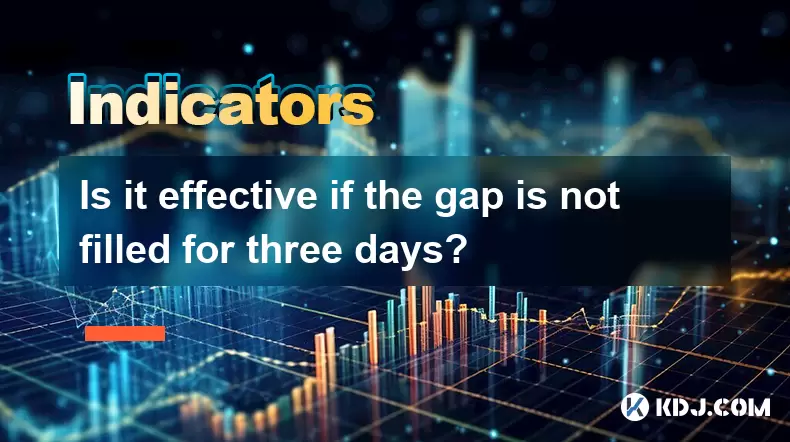
Is it effective if the gap is not filled for three days?
Jun 28,2025 at 01:00pm
Understanding Gaps in Cryptocurrency MarketsIn the context of cryptocurrency trading, a gap refers to a situation where the price of an asset opens significantly higher or lower than its previous closing price, with no trading activity occurring in between. These gaps are commonly observed during periods of high volatility, especially when major news ev...

Should I go if the average price line of the time-sharing chart suppresses the rebound?
Jun 28,2025 at 05:14pm
Understanding the Time-Sharing Chart and Average Price LineThe time-sharing chart is a real-time chart used in cryptocurrency trading to visualize price movements over short intervals, typically within a single trading day. It provides traders with insights into intraday volatility and momentum. The average price line, often calculated as a moving avera...

Can I add positions after the EXPMA golden cross steps back on the yellow line?
Jun 28,2025 at 11:57am
Understanding the EXPMA Indicator and Its RelevanceThe EXPMA (Exponential Moving Average) is a technical analysis tool used by traders to identify trends and potential entry or exit points in financial markets, including cryptocurrency trading. Unlike simple moving averages, EXPMA gives more weight to recent price data, making it more responsive to new ...

How to operate the next day after the daily limit is released with huge volume?
Jun 28,2025 at 12:35pm
Understanding the Daily Limit and Its ReleaseIn cryptocurrency trading, daily limits are often set by exchanges to manage volatility or during periods of high market activity. These limits can restrict how much an asset's price can fluctuate within a 24-hour period. When the daily limit is released, it typically means that the price cap has been lifted,...

Is it necessary to stop loss when the lower track of the rising channel falls below?
Jun 28,2025 at 05:29pm
Understanding the Rising Channel PatternThe rising channel pattern is a popular technical analysis tool used by traders to identify potential upward trends in asset prices. It consists of two parallel lines: an upper resistance line and a lower support line, both sloping upwards. The price action typically oscillates between these boundaries, offering o...

Can I chase after the W bottom neckline breaks through with large volume?
Jun 28,2025 at 07:28am
Understanding the W Bottom Pattern in Cryptocurrency TradingThe W bottom pattern is a common technical analysis formation used by traders to identify potential bullish reversals. In cryptocurrency markets, this pattern typically appears after a downtrend and signals that the selling pressure may be diminishing. The structure of the W bottom includes two...

Is it effective if the gap is not filled for three days?
Jun 28,2025 at 01:00pm
Understanding Gaps in Cryptocurrency MarketsIn the context of cryptocurrency trading, a gap refers to a situation where the price of an asset opens significantly higher or lower than its previous closing price, with no trading activity occurring in between. These gaps are commonly observed during periods of high volatility, especially when major news ev...
See all articles
























































































